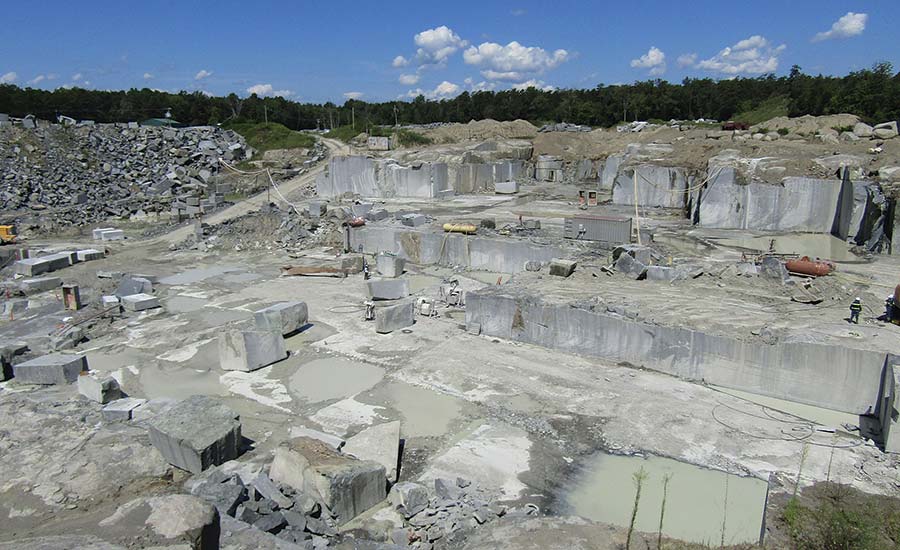Discovering the Rich History and Sustainable Practices of Granite Quarrying
As we depend on the precipice of uncovering the elaborate tapestry of granite quarrying, a journey with time reveals not just the physical act of removing stone however likewise the social and historical value woven into the extremely material of this practice. From the ancient beginnings that laid the structure for modern-day quarrying methods to the lasting practices that are shaping the future of this sector, each chisel mark on granite surfaces narrates waiting to be discovered (granite quarries in south africa). The legacy of granite quarrying extends far beyond plain extraction; it is a testament to human ingenuity, strength, and the enduring attraction of this magnificent rock
Ancient Origins of Granite Quarrying
Going back to old civilizations, the method of quarrying granite has actually been an integral part of human background and building development. The earliest proof of granite quarrying days back to old Egypt, where massive pyramids and complex sculptures were crafted from this long lasting stone. The Egyptians used primitive devices to draw out granite blocks from quarries, showcasing the importance of this material in their significant buildings.
Moving on in background, the Greeks also made significant contributions to the quarrying of granite. The Greeks utilized granite in various architectural marvels, such as temples and statuaries, demonstrating their ability in shaping and carving this hardy stone. The Romans even more fine-tuned the methods of quarrying granite, employing sophisticated tools like chisels and hammers to extract and shape granite for their renowned structures.
With the centuries, the practice of quarrying granite has evolved, with modern innovations improving performance while maintaining the classic allure of this all-natural stone - granite quarries in south africa. From ancient people to contemporary home builders, the tradition of granite quarrying continues to shape our world
Advancement of Quarrying Strategies
The advancement of quarrying methods has actually been marked by a continual progression in the direction of greater performance and precision in removing granite. Early quarrying methods entailed hands-on labor with standard tools such as chisels, hammers, and wedges to remove granite blocks from the earth.
Advancements in computer-controlled equipment and 3D modeling have actually optimized quarrying operations, leading to very little ecological effect and enhanced sustainability practices. As the demand for granite continues to increase, the evolution of quarrying techniques remains integral to meeting industry needs efficiently and sustainably.
Cultural Significance of Granite
Granite holds a profound cultural importance across different worlds due to its enduring visibility in architectural work of arts and respected monuments. From the marvelous pyramids of Egypt to the complex makings of the Angkor Wat temple in Cambodia, granite has been a material of choice for sharing magnificence and long life in cultural heritage. In ancient Rome, granite columns embellished holy places and public buildings, symbolizing strength and permanence. The social value of granite prolongs beyond its physical attributes; it embodies durability, stability, and eternity, making it a sign of enduring heritages and customs.

Sustainable Practices in Quarrying
Among the rich history of granite quarrying and its social relevance lies a growing focus on sustainable practices within the sector. As environmental recognition and worries about resource exhaustion have enhanced internationally, the quarrying field has actually increasingly embraced lasting techniques to decrease its effect on the setting and surrounding communities.

Additionally, improvement and rehab of quarry websites post-extraction are important to sustainable techniques. By recovering quarried areas to a natural or beneficial state, such as producing wildlife habitats or recreational rooms, quarriers can balance out the environmental impact of their procedures and add favorably to the local ecological community.
Heritage of Granite Quarrying
With a historic backdrop soaked in craftsmanship and commercial development, what enduring influence has granite quarrying left on the landscape of contemporary society? The heritage of granite quarrying goes beyond plain removal practices; web it has shaped architectural marvels, city landscapes, and social heritage worldwide. The durable nature of granite has actually made it a favored option for monoliths, buildings, and infrastructure, standing as a testimony to the skill and virtuosity of quarry employees across generations.
Moreover, the financial footprint of granite quarrying can not be ignored. The sector remains to supply job opportunity and drive regional economic situations in areas where granite removal is common. It has also spurred technological developments in quarrying methods and equipment, resulting in extra reliable and lasting practices.
In regards to sustainability, the tradition of granite quarrying helpful hints includes initiatives to reduce ecological impacts through reclamation jobs and responsible resource monitoring. By stabilizing economic interests with ecological stewardship, the industry strives to ensure that future generations can remain to gain from this enduring natural deposit.
Conclusion
